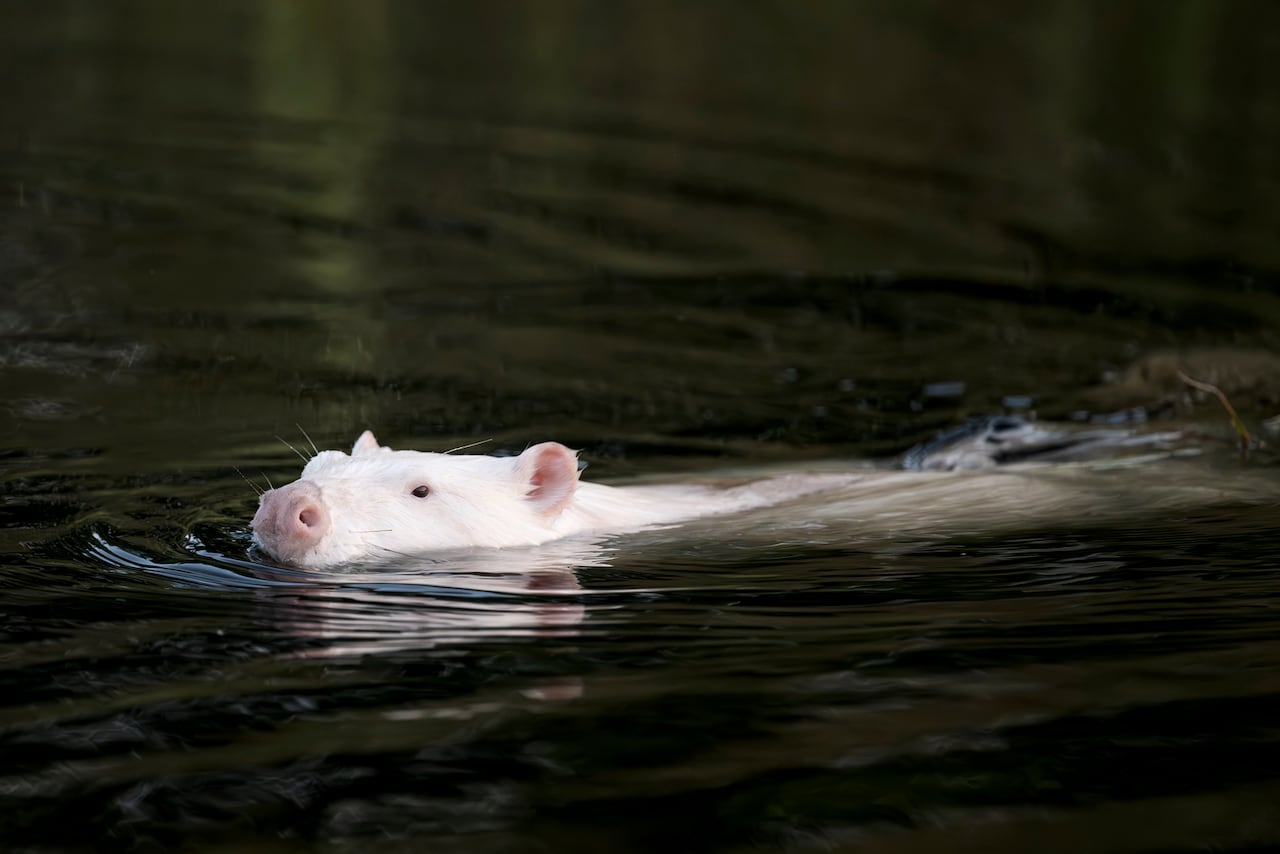On a river near Perth, Ontario, a boat full of wildlife photographers silently stalked their prey on a recent fall night.
With an electric trolling motor providing propulsion, the water remained flat as they glided upstream. But then a noise sounded like a gunshot as the target’s tail hit the water and the creature dove below the surface.
The mythical white beaver smelled them.
Ottawa photographer Dennis Jackson never expected to see such a rare creature, despite having spent his entire life capturing images of wildlife.
After spotting the white beaver on a boat trip with his neighbor a few weeks ago, Jackson was eager to return to the river with eminent Canadian naturalist Michael Runtz, his wife Britta Runtz, who is also a professional photographer, and a CBC reporter.
In addition to hoping for another sighting, Jackson wanted to answer one question: Was this beaver albino — which would be an unlikely survival story, given that most albino animals are nearly blind — or leucistic, a genetic condition that causes a partial loss of pigmentation?
The white beaver appeared again at dusk, but after sniffing the humans it was unclear whether he would stick around to answer the question.

As photographers waited with baited breath, the white beaver passed the boat underwater, its pale tail glistening, before emerging on a patch of reeds. The creature then came ashore to preen its fur, revealing a patch of dark fur on its left front paw and clearly dark eyes.
“With true albinism, you can’t produce any dark pigmentation, so the eyes are always pink, so I would say it’s a leucistic beaver,” Runtz concluded.
The recently retired Carleton University professor was delighted by the sighting.
“Seeing a completely white beaver with dark eyes and dark feet is incredible!”
Better yet, they had photographs to prove it.
“I’m really happy just seeing this, if I didn’t take any photos I would be almost as happy. But I have to admit I’m a little happier that we were able to take photos too,” said Runtz.
Like other wild creatures, beavers occasionally produce offspring with color mutations, but the lighter coat can make them more visible to predators.

White beavers are so unusual that the Canadian Museum of Nature keeps in its collection a leucistic beaver pelt collected in Rainy River, Ontario, 1918.
Dominique Fauteux, a research scientist at the museum and mammal expert, says the rarity of white beavers suggests that, in evolutionary terms, it was not a beneficial mutation.
“Over millions of years, this type of mutation, this genetic mutation, has not become very common,” he told CBC. “The pressure for evolution is not very strong to keep this gene in the gene pool.”
For Jackson, the scientific impact of the sighting was less important than its uniqueness.
“That’s one of the coolest things I’ve ever seen,” he declared as he drove the boat home.

Leave a Reply